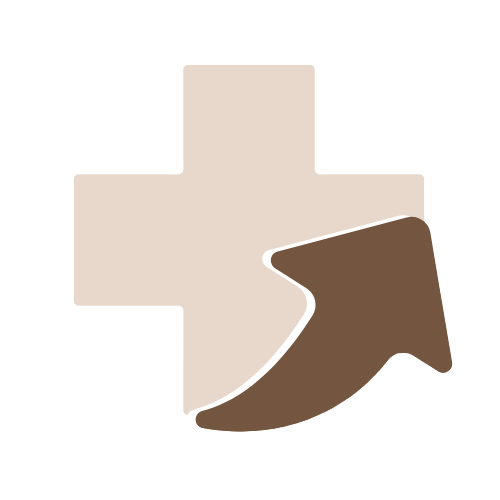Anorexia
Overview
Anorexia, medically known as Anorexia Nervosa, is a serious eating disorder characterized by an intense fear of gaining weight, a distorted body image, and severe restriction of food intake. People with anorexia often perceive themselves as overweight, even when they are dangerously underweight. This condition can lead to significant physical and psychological complications, affecting multiple organ systems. Anorexia most commonly affects adolescent girls and young women but can also occur in men and people of any age. Early diagnosis and treatment are crucial to prevent long-term health consequences.
Causes
The exact cause of anorexia is complex and involves a combination of biological, psychological, and environmental factors:
- Genetics: A family history of eating disorders, depression, or anxiety can increase the risk of developing anorexia.
- Psychological factors: Low self-esteem, perfectionism, and obsessive-compulsive tendencies are commonly observed in individuals with anorexia.
- Societal pressures: Cultural emphasis on thinness and societal beauty standards can contribute to body dissatisfaction and unhealthy dieting behaviors.
- Trauma: Emotional trauma, abuse, or stressful life events may act as triggers.
- Biological factors: Hormonal imbalances and alterations in brain chemicals, particularly serotonin and dopamine, may play a role.
- Peer influence: Peer pressure and social media can reinforce unhealthy body ideals and dieting behaviors.
Symptoms
Symptoms of anorexia can be both physical and psychological, including:
- Severe weight loss: Noticeable loss of body weight not explained by illness.
- Restricted eating: Extreme calorie restriction, skipping meals, and avoiding certain food groups.
- Preoccupation with weight and body image: Constant fear of gaining weight, frequent weighing, and negative self-talk about appearance.
- Excessive exercise: Engaging in compulsive or excessive physical activity to burn calories.
- Physical symptoms: Fatigue, dizziness, hair thinning, dry skin, and feeling cold frequently.
- Menstrual irregularities: In women, missed periods (amenorrhea) are common.
- Digestive issues: Constipation, bloating, and abdominal discomfort.
- Social withdrawal: Avoidance of social events, especially those involving food.
- Depression and anxiety: Mood swings, irritability, and heightened anxiety levels.
Diagnosis
Diagnosing anorexia involves a combination of clinical evaluation, psychological assessment, and laboratory testing:
- Physical examination: Assessment of vital signs, body mass index (BMI), and signs of malnutrition.
- Psychological evaluation: Mental health professionals use structured interviews and questionnaires to assess eating habits and body image.
- Diagnostic criteria: Diagnosis is based on criteria outlined in the Diagnostic and Statistical Manual of Mental Disorders (DSM-5).
- Blood tests: Laboratory tests check for electrolyte imbalances, anemia, and hormonal disturbances.
- Bone density scans: To assess bone health, as anorexia increases the risk of osteoporosis.
Treatment
Effective treatment for anorexia usually requires a multidisciplinary approach involving medical, nutritional, and psychological care:
- Nutritional rehabilitation: Developing a healthy eating plan with the help of a dietitian to restore normal weight and correct nutritional deficiencies.
- Psychotherapy: Cognitive Behavioral Therapy (CBT), Family-Based Therapy (FBT), and other counseling techniques address distorted thoughts and behaviors.
- Medical management: Monitoring and treating physical complications, such as electrolyte imbalances, heart problems, and bone loss.
- Medications: Antidepressants or antianxiety medications may be used if coexisting mood disorders are present.
- Hospitalization: In severe cases with life-threatening malnutrition or psychiatric crisis, inpatient care may be necessary.
- Support groups: Peer support and group therapy provide encouragement and shared experiences for recovery.
Prognosis
The prognosis for anorexia varies depending on the severity, duration, and response to treatment:
- Positive outcomes with early treatment: Early intervention significantly improves the chances of recovery.
- Chronic cases: Some individuals experience long-term struggles with body image and eating habits, requiring ongoing care.
- High relapse rate: Relapse is common, highlighting the importance of long-term follow-up and support.
- Serious health risks: Without treatment, anorexia can lead to severe complications like heart failure, infertility, and osteoporosis.
- Mortality risk: Anorexia nervosa has one of the highest mortality rates among psychiatric conditions, emphasizing the need for timely medical and psychological intervention.
- Hope for recovery: With comprehensive treatment and continued support, many individuals recover and regain a healthy relationship with food and their bodies.
Overall, a supportive environment, combined with professional treatment, can lead to successful recovery and improved quality of life for those affected by anorexia.
